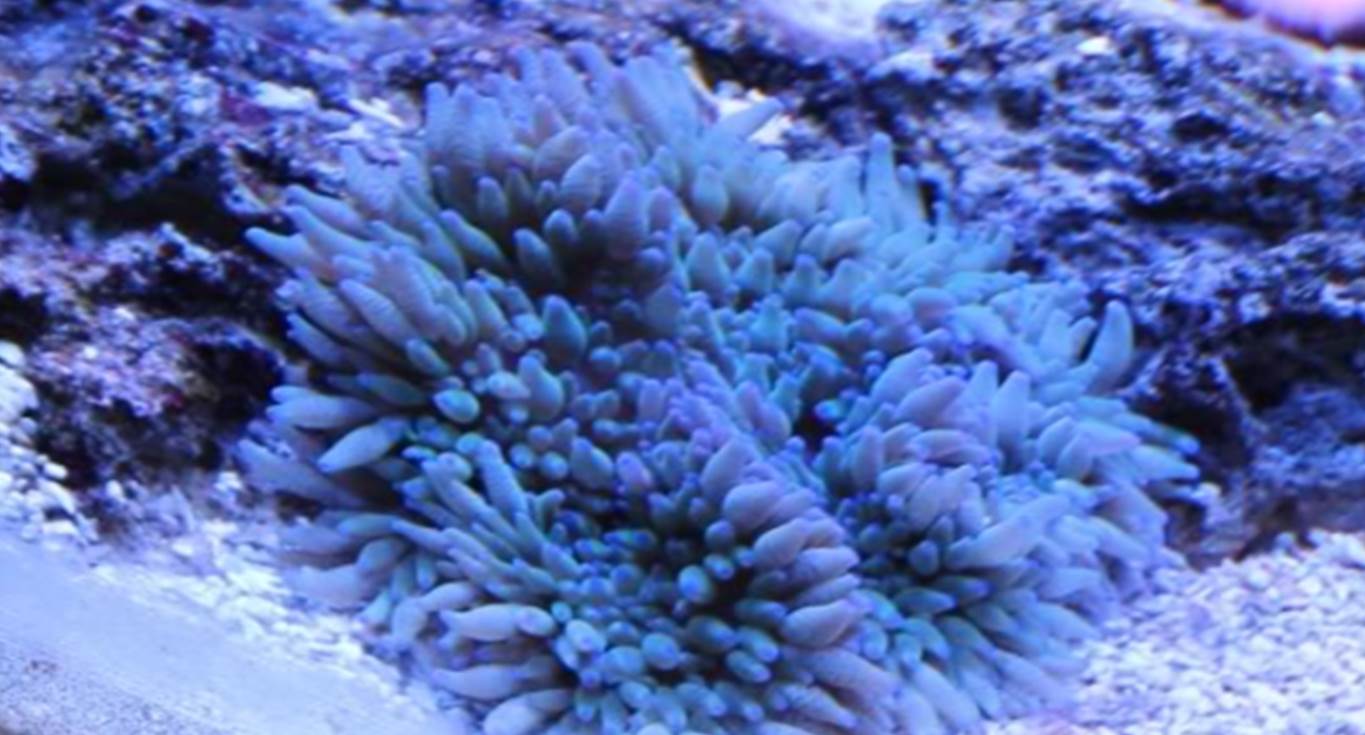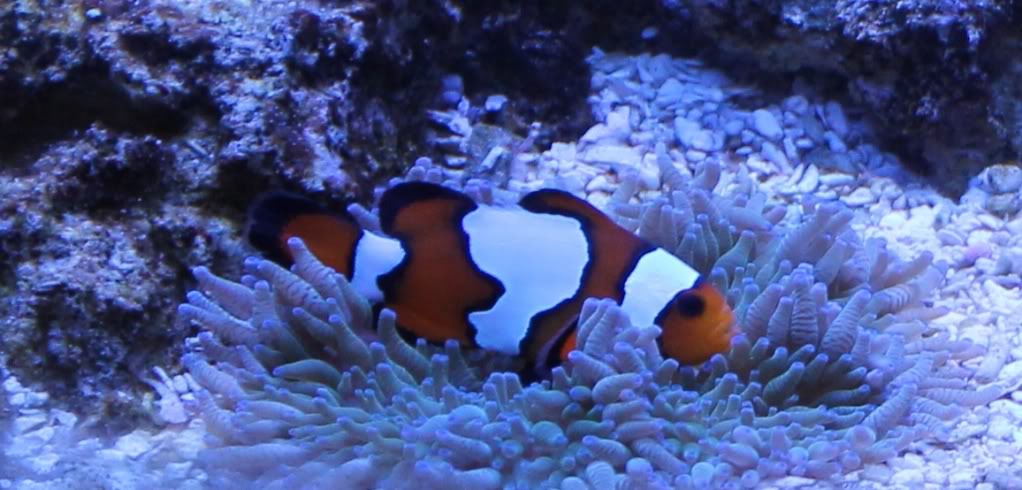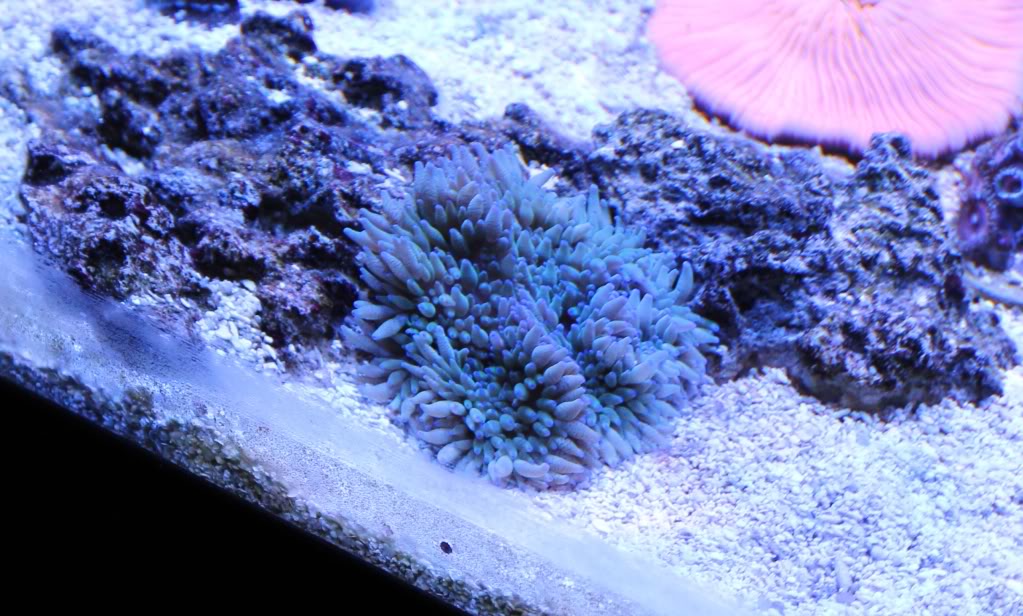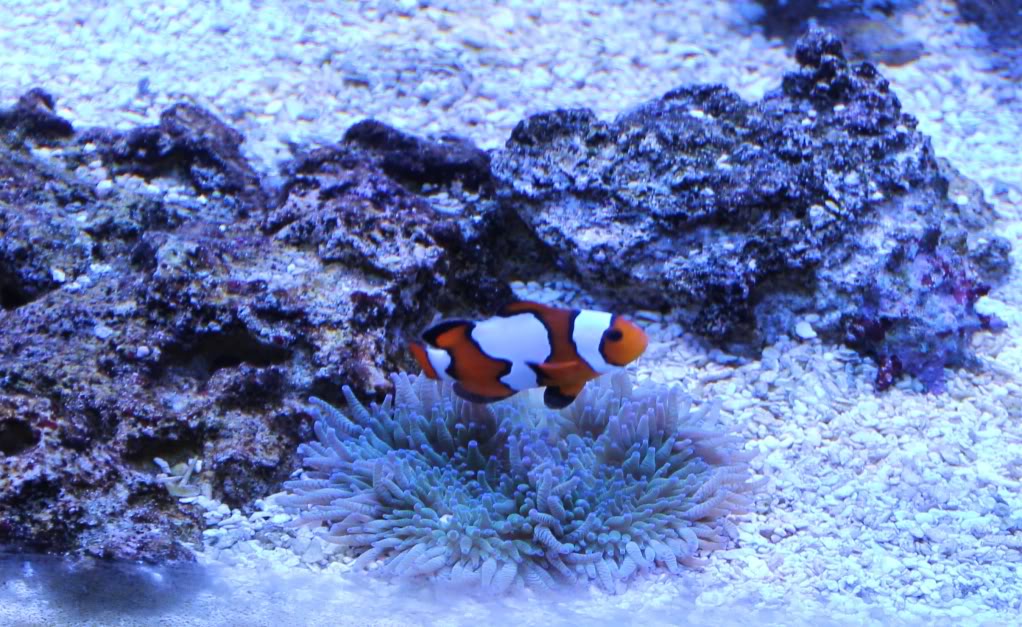
Sebae Anemone
Common Name: Sebae Anemone, Leather Anemone
Scientific Name: Heteractis Crispa
Reef Safe: Yes
Flow: Moderate
Lighting: High
Care Level: Moderate to Difficult
Max Size: Around 30 inches
Appearance:
The sebae anemone has longer tentacles (1.5 to 2.5 inches in length) which is very similar in length to a bubble tip anemone. The tentacle will typically be a brown(ish) color with the tips having a blue to blue/green coloring to them. The below pictures are of my sebae anemone.



Temperament
A sebae anemone has been known to eat smaller fish and invertebrates on occasion. While the sebae anemone has been known to move, it typically will not do that unless there is something wrong with the water parameters. For that reason, extreme care should be taken when keeping a sebae anemone in an aquarium with other anemones
Environment
The sebae anemone can get to be a little over 30 inches across which is why I would suggest a tank size of no less than 40 gallons for these anemones (forty gallon breeder is a better minimum tank size). However, a larger tank would make it a lot easier for you to maintain stable water parameters, which is something the sebae anemone truly needs. As with all anemones, they need to be placed in a stable and matured aquarium. I would only recommend then to hobbyists who are at least somewhat experienced
Sebae anemones are not among the more common anemones available in the hobby these days. In my experience, sebae anemones typically like to attach it’s boot in rocky and sandy spots. They like moderate flow and high lighting conditions.
Recommended water conditions:
I would refer you to the below article for the typical water conditions that a sebae anemones will do best in. As a more difficult invertebrate to keep, the sebae anemone will also need both good and very stable water parameters for long term success.
https://www.reefaquarium.com/2013/the-basics-of-marine-aquarium-water-parameters/
Diet
While sebae anemones can thrive under the correct level of lighting (providing all other requirements are met) they can still benefit from the occasional (or weekly) feeding made up of some meeting foods. You must be careful to offer only high quality foods as anemones (in general) can suffer from bacterial infections when offered poor quality foods. The below link can help you with that as well.
https://www.reefaquarium.com/2012/feeding-high-quality-froozen-foods/
Reproduction
It is not very common for the sebae anemone to reproduce in a home aquarium, even when kept in ideal conditions.
Fragging
In my opinion, you should not frag anemones as they are invertebrates and not corals. Although you can find information on line posted by people who claim to have successfully fragged anemones, I would encourage you to read through the below link before considering to attempt fragging an anemone.
http://www.wifeofnerd.com/images/Embryonic%20development%20of%20E.%20quad%20H.%20crisp.pdf
http://www.wifeofnerd.com/images/Broadcast%20spawning%20of%20E.%20quad%20H.%20crisp.pdf
A Word of Caution
Handle this invertebrate, and all Anemones, with care. They have the ability to sting with their tentacles. These stings can cause skin irritations or serious allergic reactions. Always wear protective rubber gloves when handling anemones
The sebae anemone can also have very sticky tentacles as compared to a lot other anemones. This can make it a very aggressive eater as it will not let go if a fish (or your hand) were to come in contact with the tentacles. I would almost be willing to classify these guys as aggressive eaters/predators if it wasn’t not for the fact they typically don’t move.
Clownfish
If you would like clown fish, consider the below list of some the more common clown fish that have been known to readily host in sebae anemones.
Amphiprion Clarkii
Amphiprion Ocellaris, ocellaris clown fish (all color variations)
Amphiprion Bicinctus, or two-band clown
Amphiprion Frenatus, or tomato clown
Amphiprion. Melanopus, or cinnamon clown
For some more detailed information about anemones in general, I would refer you to the below link
https://www.reefaquarium.com/2012/keeping-anemones/
Thanks for the info, do you have any published knowledge on how to run a simple reef system,(minimal mechanical ?). I’m new to salt but that’s what I’m working on
The below links should help
https://www.reefaquarium.com/2013/common-approaches-to-filtration-in-marine-aquariums/
https://www.reefaquarium.com/2012/setting-up-your-first-marine-aquarium-2/
Hey! Great information! I currently have 2 sabae anemones on my 25 bowfront ( I read your article and you suggest nothing less than 30 gallons). However, they seem to be doing very well. I got them two weeks ago. They were very unhappy. Their tentacles were deflated and small. Their mouths were still closed so after a week of them being at the pet store I decided to bring them home. I felt bad for them. The lighting was all wrong, the water temp was too warm and they were hiding under a black frag shelf. They have decided to attach to my live rock, I don’t mind this I’d rather them be there than in my sand bed because I can see them better. I haven’t offered food yet. I wanted to give them time to attach (took about 3 or 4 full days before they settled) can I possibly send you pictures or a video? I’d really like to have the opinion of someone who has kept them before. I want to know if the look happy and fully open. I feed two different types of food; LRS and mysis shrimp alternating each day. My peramiters are stable and my salinity is 1.026.
Thank you!
Cynthia
I would be very careful feeding these guys more than once a week. Even more so since they are still very new to your set-up and in such a small tank. Keep in mind, they may do very very well in your tank for a period of time, but once they start growing closer to their maximum size of 25 to 30 inches, you will be running into some difficulties.
The best way to get pictures to me is to upload them to an on-line site (like photo bucket) and post a link to the pic here.